It is even more honorable that the Rach Goc crab salting craft in Ngoc Hien district was recognized as an intangible cultural heritage by the Ministry of Culture, Sports and Tourism (VHTT&DL). This is a source of pride, bringing both great material and spiritual value to the people here.
With the favor of nature, fresh three-sided crab in Ngoc Hien is always abundant and available all year round. To preserve it for a long time, people have formed the profession of salting three-sided crab to use as food for forest trips, fishing at sea... Gradually, salted three-sided crab became known to many people and has developed until today.
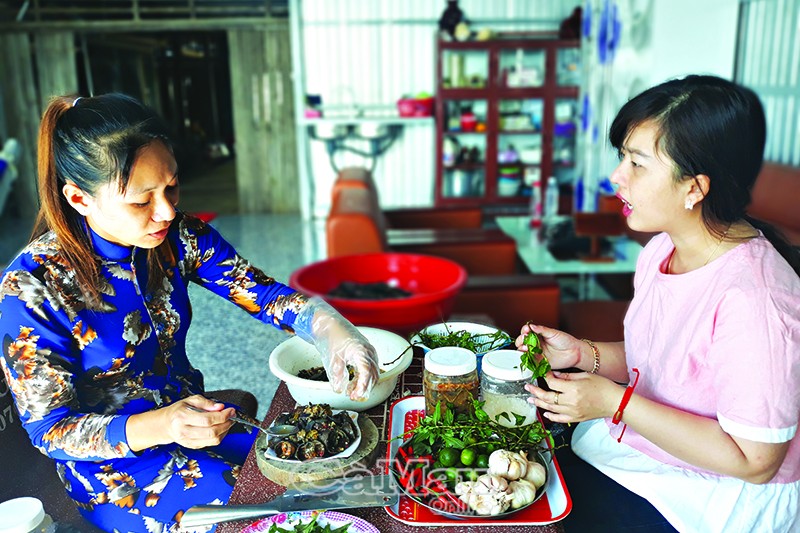 |
| To make the three-striped crab dish more appealing, Ms. Chau Thi Dam (left), owner of Chau Sang three-striped crab establishment, marinates it with spices a few hours before eating. |
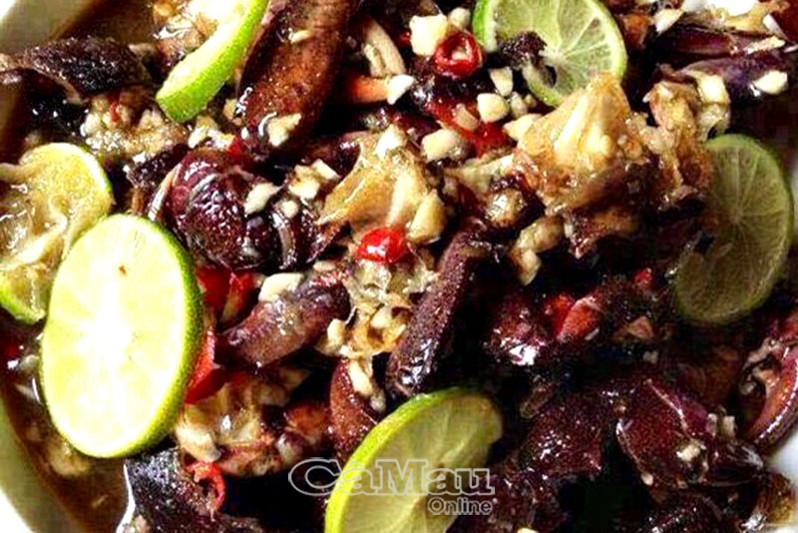 |
| Salted crab mixed with spices becomes an attractive and unique dish. |
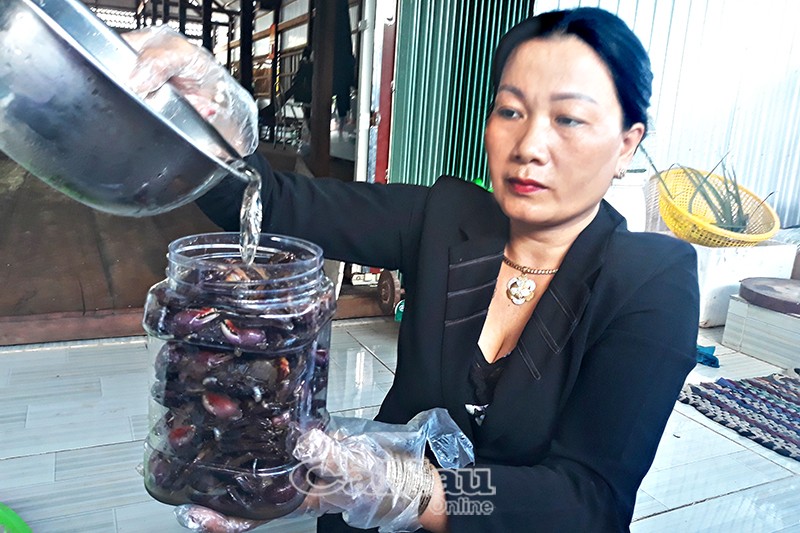 |
| The profession of salting three-sided crab in Rach Goc area, Ngoc Hien district has been passed down for many generations, and today has become a national intangible cultural heritage. |
Head of the Department of Culture, Sports and Tourism of Ngoc Hien District, Le Chi Thang, said that in Ngoc Hien District, there are 7 communes and towns with over 20 households specializing in salting three-sided crabs. Each month, over 3 tons of salted three-sided crabs are sold to the market. Rach Goc salted three-sided crabs are consumed in almost all provinces and cities in the country, most of which are in the Mekong Delta region.
According to Mr. Thang, to preserve and promote this profession, we must ensure the source of natural breeds. Therefore, it is necessary to have a plan to protect or develop the breed of three-sided crab to ensure the supply of salted three-sided crab all year round. Therefore, Ngoc Hien is having to step up propaganda work so that people who catch three-sided crabs avoid catching small ones. It is necessary to form a three-sided crab farming area. This is also a model that combines tourism development to attract visitors to learn about the living conditions of three-sided crabs as well as the three-sided crab salting profession of the people of this coastal area.
With the salted crab profession, each family has its own secret. This profession may have been passed down through many generations. But the general standard for delicious salted crab is that the maker must choose large crabs with firm meat and keep the saltiness moderate. If the saltiness is not enough, the crab will smell bad, and if there is too much salt, the crab will lose its meat. After 1 week of salting, the crab is separated and processed with rustic ingredients such as garlic, chili, lemon, and sugar, mixed together to create a unique dish of the southernmost land of the Fatherland.
Ms. Nguyen Hong Dam, owner of a salted crab farm in Hamlet 8, Rach Goc Town, Ngoc Hien District, shared: Ngoc Hien land is favored in terms of natural conditions, climate, food for crabs... so the crabs in this area are always of better quality than those in other places. The meat is fragrant and delicious. Because the crabs here live under mangrove forests, eat mangrove fruits, and produce golden crab fat.
According to Ms. Dam, to make delicious salted crab, you need to choose fresh crab. In Ca Mau, people prefer female crab, while in other places, they prefer male crab. Female crabs have eggs, but if they are salted for a long time, they will lose their meat, while male crabs can keep their meat longer. "Each person and each region has their own taste, but for me, Rach Goc - Ngoc Hien crabs, both female and male, are delicious. It takes about 5-7 days to salt the crab. As for this profession, each person has their own secret. Salted crabs are a traditional profession, so we must preserve and promote them to follow the right direction and quality," Ms. Dam said.
The time of the crab festival is from August to October of the lunar calendar, the amount of crab is abundant and the meat is firm, so local workers often take advantage of catching fresh crabs to sell to establishments to earn extra income for their families. This is also the time when the source of crabs is most abundant, each day can supply the market with several tons of salted crabs. But each year there is only 1 month.
Mr. Bong Van Muoi, Xeo Mam hamlet, Tan An commune, shared: "For poor households in Ngoc Hien area, catching three-sided crab has long become a profession. Every night, three-sided crab catchers earn from 200-300 thousand VND. Fresh three-sided crabs are purchased by traders at 40 thousand VND/kg, sometimes the purchase price is 55 thousand VND/kg. During the three-sided crab festival season, three-sided crab catchers earn over 1 million VND/night.
From the rustic dishes of the workers, now salted crab is known to more people because the flavor of Rach Goc crab cannot be mixed with other places. The salted crab profession in this homeland will continue to be preserved, developed, forming a craft village connected with sightseeing and discovery activities for domestic and foreign tourists.
Mr. Le Chi Thang added: Nowadays, three-sided crab is processed into many different dishes such as three-sided crab fried with tamarind, boiled three-sided crab, three-sided crab steamed with beer... But the dish that occupies the most place in the hearts of locals and tourists is still Rach Goc salted three-sided crab./.
Chi Hieu - Hong My
Source: https://baocamau.vn/ba-khia-muoi-tu-hao-mon-ngon-mien-bien-a575.html














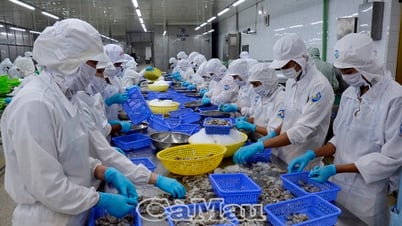











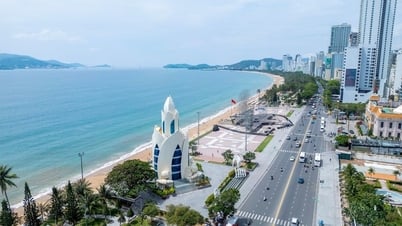



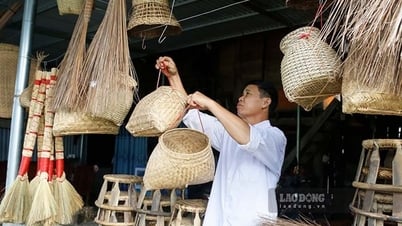
















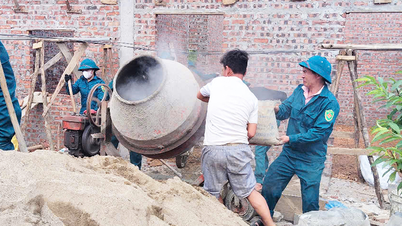




















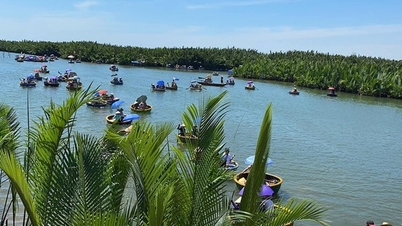




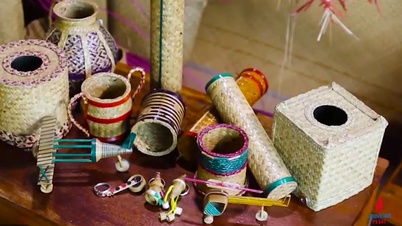

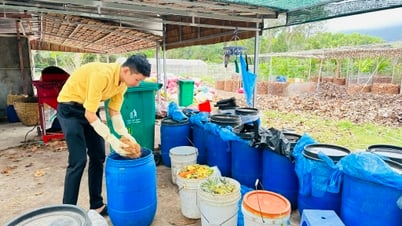









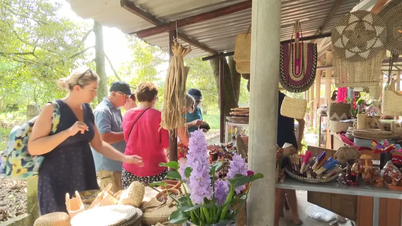











Comment (0)